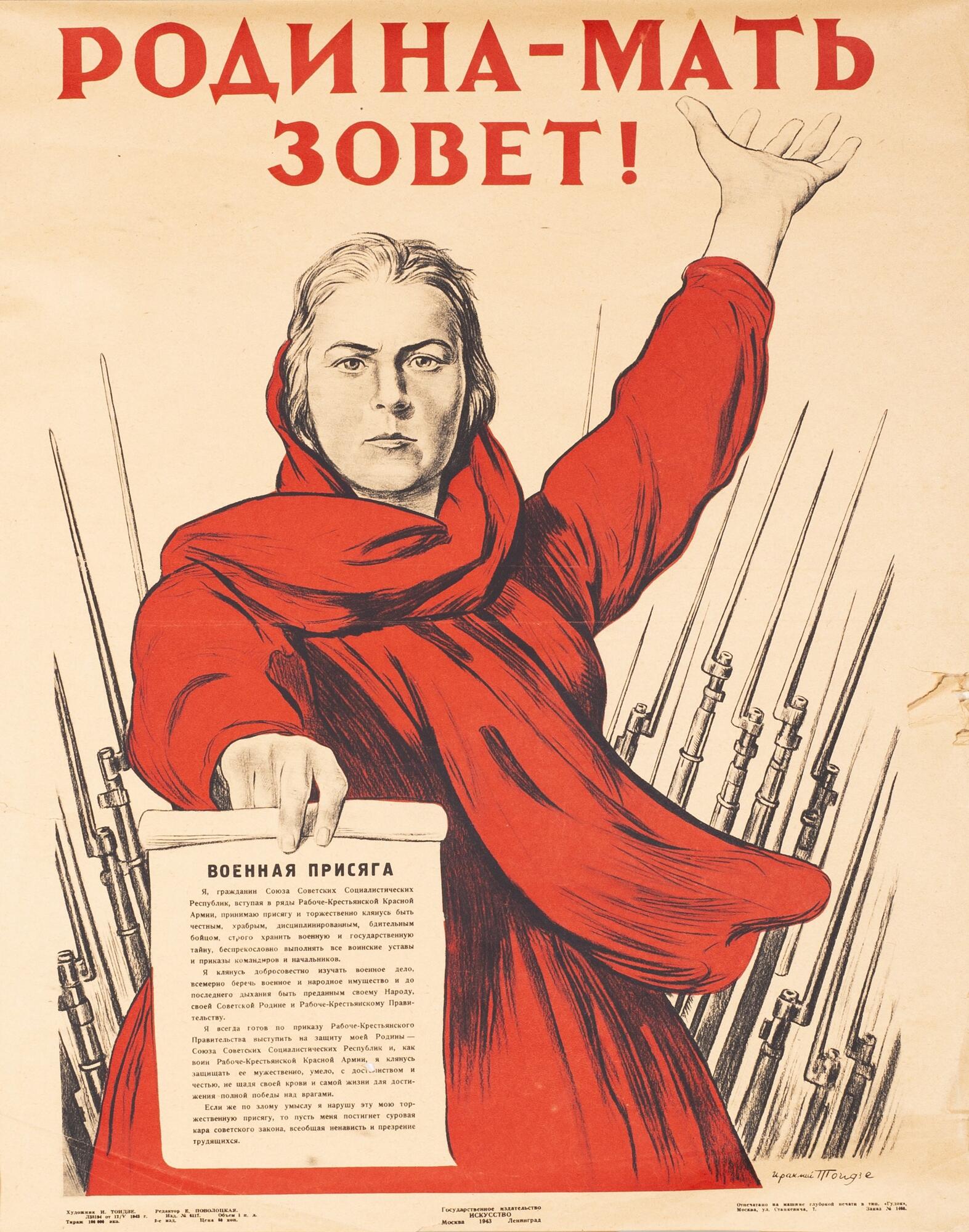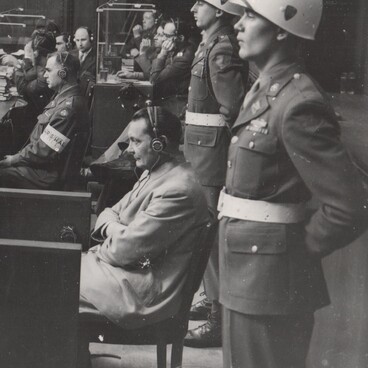Soviet propaganda was a powerful tool. It was implemented in a targeted and centralized manner under the leadership of the All-Union Communist Party (Bolsheviks), later known as the Communist Party of the Soviet Union. Ideological activity and political propaganda began with the establishment of Soviet power.
It became particularly prevalent during the Great Patriotic War. Propaganda focused on boosting the morale of soldiers and workers of the labor front. During the war, posters came into focus as one of the most popular media for transmitting propaganda messages.
In their posters, Soviet painters encouraged people to stand up against the Nazi atrocities, become aware of their duty to the Motherland, and perform acts of heroism.
“The Motherland Calls” is one of the signature Soviet posters. An extraordinary number of copies was printed, with the first print run alone exceeding one million copies. The poster was designed by the artist Irakli Toidze in 1941, most likely, at the end of June. The exact date is unknown and is still subject to debate.
The poster depicts a generalized image of a mother who calls upon her sons for help. The artist recalled the inspiration for the poster, saying that it was purely accidental. He and his wife were at home. When the news of the Nazi invasion was first broadcast by the Soviet Information Bureau, his wife rushed into his studio crying out “War!”.
Irakli Toidze was stunned by the expression on his wife’s face. He asked her to stay still and immediately began sketching. The Motherland can be traced back to the image of Mother Russia, which was widely used for propaganda during World War I and the Russian Civil War.
In her hands, Motherland holds a military oath. Every soldier had to swear allegiance before being sent to the frontline to fight Nazi invaders. Behind the woman, there is a bayonet wall. It symbolizes the powerful force supporting the country.
Wartime printing houses produced a miniature version of the poster, which was smaller than a postcard. Many frontline soldiers kept a miniature poster in their chest pockets along with the photos of their families, and their Communist Party and Komsomol Membership cards.
It became particularly prevalent during the Great Patriotic War. Propaganda focused on boosting the morale of soldiers and workers of the labor front. During the war, posters came into focus as one of the most popular media for transmitting propaganda messages.
In their posters, Soviet painters encouraged people to stand up against the Nazi atrocities, become aware of their duty to the Motherland, and perform acts of heroism.
“The Motherland Calls” is one of the signature Soviet posters. An extraordinary number of copies was printed, with the first print run alone exceeding one million copies. The poster was designed by the artist Irakli Toidze in 1941, most likely, at the end of June. The exact date is unknown and is still subject to debate.
The poster depicts a generalized image of a mother who calls upon her sons for help. The artist recalled the inspiration for the poster, saying that it was purely accidental. He and his wife were at home. When the news of the Nazi invasion was first broadcast by the Soviet Information Bureau, his wife rushed into his studio crying out “War!”.
Irakli Toidze was stunned by the expression on his wife’s face. He asked her to stay still and immediately began sketching. The Motherland can be traced back to the image of Mother Russia, which was widely used for propaganda during World War I and the Russian Civil War.
In her hands, Motherland holds a military oath. Every soldier had to swear allegiance before being sent to the frontline to fight Nazi invaders. Behind the woman, there is a bayonet wall. It symbolizes the powerful force supporting the country.
Wartime printing houses produced a miniature version of the poster, which was smaller than a postcard. Many frontline soldiers kept a miniature poster in their chest pockets along with the photos of their families, and their Communist Party and Komsomol Membership cards.

